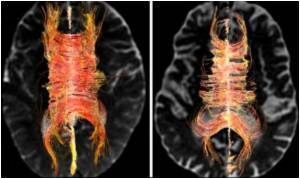Nystagmus, also known as dancing eyes, involves a rhythmic oscillation or flickering of the eyes. The magnetic prosthesis can control eye movement, finds a study.

- Nystagmus is a condition characterized by involuntary eye movements
- Magnetic oculomotor prosthesis can control eye movement in patients with nystagmus, according to a new study
- Oculomotor prosthesis involves two magnets; one magnet is implanted on the orbital floor and the other sutured to one of the extraocular muscles to control eye movement
"Our study opens a new field of using magnetic implants to optimize the movement of body parts," said Dr Parashkev Nachev, UCL Institute of Neurology.
Magnetic Implants to Treat Nystagmus
Nystagmus can be caused by abnormal function in the brain areas that control the eye movements. This condition occurs with different origins in the central nervous system, which poses a challenge for developing drugs. For the study, the research team focused on the eye muscles to treat nystagmus.
"But until now, mechanical approaches have been elusive because of the need to stop the involuntary eye movements without preventing the natural, intentional movements of shifting gaze," said Dr Nachev, the lead author of the study.
The research team developed an oculomotor prosthesis involving one magnet which implanted on the orbital floor (the bone at the bottom of the eye socket) and another magnet sutured to one of the extraocular muscles, which control the eye’s movement.
"Fortunately the force used for voluntary eye movements is greater than the force causing the flickering movements, so we only needed quite small magnets, minimizing the risk of immobilizing the eye," said Professor Quentin Pankhurst (UCL Medical Physics & Biomedical Engineering), who led the design of the prosthesis.
Before the implantation, the magnets were tested while attached to a contact lens. After that had been shown to be successful, the magnetic prostheses were implanted in two separate sessions, one for each eye by Professor Geoff Rose and Mr David Verity at Moorfields Eye Hospital.
Following the procedure, the recovery was quick and the patient reported that the oscillopsia improved. However, he has a degree of double vision, a symptom which he had developed before the nystagmus.
Tests showed that the overall visual acuity was substantially improved and there has been no negative impact on his functional range of movement. Over four years of follow-up, the symptoms have remained stable and he has managed to return to his daily activities such as reading and watching television.
"While the exact neural mechanisms causing nystagmus are still not fully understood, we have shown that it can still be corrected with a prosthesis, without needing to address the neural cause. What matters here is the movement of the eye, not how it is generated," said Professor Christopher Kennard (University of Oxford), who co-led the study.
The research team cautioned that their prosthesis might not be effective for everyone with nystagmus. Magnetic implants are not suitable for patients who require regular MRI scan. More research is needed to understand in which patients the prosthesis would be most helpful.
Currently, the research team is recruiting patients for a larger study, which is led by Professor Rose at Moorfields Eye Hospital, and funded by the National Institute for Health Research (NIHR).
Reference:
- Parashkev Nachev, Geoff E. Rose, David H. Verity, Sanjay G. Manohar, Kelly MacKenzie, Gill Adams, Maria Theodorou, Quentin A. Pankhurst, Christopher Kennard. “Magnetic Oculomotor Prosthetics for Acquired Nystagmus.” Ophthalmology, (2017). DOI: http://dx.doi.org/10.1016/j.ophtha.2017.05.028
Source-Medindia










